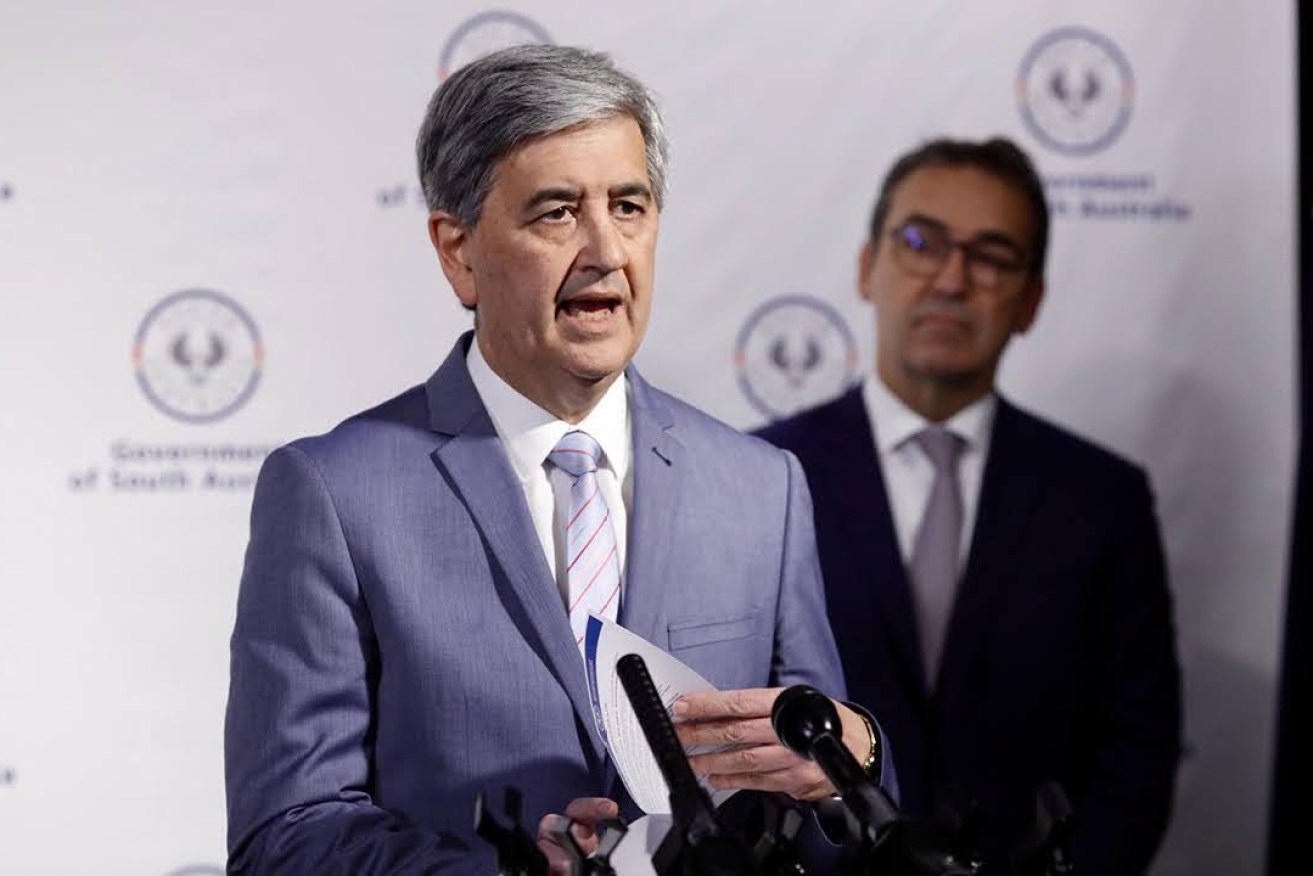Govt spends $200m on redundancies – but the public sector keeps growing
The Marshall Government spent more than $200 million on public service redundancies in just two years – but has still presided over an increase in overall public sector numbers.

Photo: Tony Lewis / InDaily
Treasurer Rob Lucas today conceded defeat in his long-held ambition – and election commitment – to reduce the size of the SA government sector, but insisted the Liberal Government had invested in frontline services while axing “admin staff”.
A report on state finances by Auditor-General Andrew Richardson was tabled in parliament last week, confirming the Government axed 761 FTEs via targeted voluntary separation packages and executive separations in the last full financial year, with the cost of the cull totalling $75 million – $15 million more than budgeted.
That followed a reduction of 1431 FTEs in 2018-19 – the Government’s first full year in office – at a cost of $128.421 million.
The more recent cost could be even higher, with a separate Auditor-General’s report tabled a fortnight earlier citing a different figure for 2019-20 – putting the payout cost at $86.9 million for the loss of 959 employees.
It’s understood the discrepancy relates to the difference between the general government sector and the non-financial public sector.
However, in the same period, the public service continued to grow, from 84,951 in 2018 to an estimated 85,698 in 2020, according to the last budget.
Lucas’s prediction in 2018-19 was for the sector to be reduced to just 82,356 by last year – which means he’s fallen short of his own goal by more than 3000.
“We wanted a modest reduction [and] we haven’t achieved a modest reduction – there’s been a modest increase,” Lucas conceded today.
“That’s a fact of life – we’re going to continue to provide the quality public services people are demanding,” he told InDaily.
“The reality is we continue to grow numbers in areas such as health, for example, and child protection [where] there are a number of problems.”
However, figures provided to the Opposition after questions in parliament show those departments accounted for a significant number of redundancies, with 90-plus departing Child Protection between 2018-20.
The Auditor-General’s report states that the Department of Health and Wellbeing accounted for the majority of TVSPs and executive separations in the past year alone, with “324 acceptances totalling $28 million”, while the Human Services agency saw more than 400 staff depart over the two-year period.
Corrections also saw well over 200 leave their jobs, according to data provided to the Opposition.
But Lucas insisted the departures were primarily ‘backroom’ staff who had been replaced by frontline employees, citing Education – which lost more than 150 staff – as a particular example.
“Our teacher numbers have gone through the roof [because] the enrolments we’ve seen in government schools have grown significantly,” he said.
“We’re locked in to staffing ratios under the Gonski formula, so our teacher numbers go up.
“There are TVSPs because the only way they meet their efficiency dividends is to reduce the admin people.”
Likewise in Child Protection, he insisted, “people come out of admin and we’re employing people in residential care”.
“It’s a general principle where you target your TVSPs in areas you’re reducing your priority [and] there’s growth in the highest spending areas.”
He said the Government had been unable to meet its stated ambition to reduce the size of the sector.
“I don’t think there’s any doubt the goal was to try to reduce overall total numbers, but if school enrolments go up, teacher numbers have to go up,” he said.
Ironically, Lucas released a statement before the 2018 election criticising the former Labor Government for spending $448.7 million over seven years on separation packages – while the size of the overall sector increased by 3501 over the same period.
At the time, the now-Treasurer called it “yet another example of the financial mismanagement and incompetence of the Weatherill Labor Government”.
“Clearly whilst the Government is spending millions of taxpayers’ dollars to get public servants out the front door, they are replacing them and employing thousands more through the back door,” his media statement read.
He pledged an elected Marshall Government would “initiate an urgent review into the operations of the TVSP scheme to ensure it operates in the best interests of taxpayers”, arguing: “There has to be a net reduction of one public service position for each TVSP.”
“Instead, job positions are being renamed and replaced immediately or after a short time period,” he lamented at the time.
Lucas however today defended the big spend on redundancies, saying “if we didn’t do that we’d be continuing to pay those sorts of sums each year in wages”.
“The TVSPs means that that sum, in terms of operating cost, would be reduced,” he said.
However, there appears little hope of him making a further dent in public service numbers, with the Auditor-General declaring that “a limited change in total public sector workforce numbers is expected between 2019‐20 and 2023‐24”.
Moreover, there appears little change in the overall growth trajectory from the previous government, with “growth in total public sector workforce numbers between 2014-15 and 2019-20 relatively consistent with state population growth”.
Opposition Treasury spokesman Stephen Mullighan said the figures pointed to a “basic mismanagement” of the public sector workforce.
“The Government has spent a couple of hundred million dollars getting rid of nearly 2500 FTEs – only to blow their initial budget forecast by 3000,” he said.
“It’s extraordinary that the Government would spend more than $200 million paying nearly 2500 public servants to leave the public sector, while at the same time recruiting an extra 3300 workers – this is basic mismanagement by the Marshall Liberal Government.”
He dismissed the suggestion backroom staff were being replaced with frontline services, saying there “must have an awful lot of admin staff in Human Services if they’ve got rid of 470 of them in just two years”.
“In agencies like Child Protection, it doesn’t seem to make sense that they’re paying people to leave while they’ve got key staff shortages,” he argued.
Mullighan said Labor would outline its own public sector management plan closer to next year’s election, but “there’s always been room for a modest, appropriate TVSP scheme in the public sector, where the government of the day is legitimately seeking to reduce a number of positions to try and restructure the operations of agencies”.
However, he added, “there’s never been anything on the scale of what the Liberal Government have been doing in their first years in office”.
“We’ve never seen a TVSP scheme that paid out over $200 million in two years – only to immediately more-than replace the staff,” he said.




